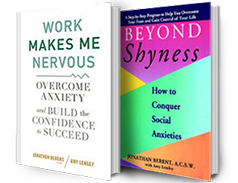A Dynamic Profile of The Friendship Connection
Bob, age 24, worked for the county parks department in a full time job. His learning disabilities impacted his overall maturation process to the point that his social skills were challenged and he had no quality peer relationships. Susan, age 32, had a civil service job but was in a similar social predicament. In addition, both Bob and Susan experienced difficulty with independence skills and were over-dependent on their parents.
Karol was a 16-year-old student attending a Catholic school on Long Island. She had no friends and no peer relationships outside of her family. In fact, her peers tormented her on the bus, putting gum in her hair and throwing spitballs at her. This relentless teasing left her anxiety- ridden and depressed. Karol was singled out because of her social awkwardness, which was very much the result of her difficulty processing social cues.
Michael’s best and only friends at age 16 were the computer and television. Kids made fun of him because of his thick glasses and his speech impediment. While he maintained a B- average in school, his self-esteem was very low and his social anxiety very high. He avoided social situations because of his increasing embarrassment.
David went to a college with a supportive learning disabled program at age 18, but didn’t go to classes and did not go for his specialized support. He stayed in his room, watched television, avoided socializing and over-ate to the point that he put on 50 pounds to go with his irritable bowel syndrome. He kept this lifestyle a secret from his parents until the school suspended him. David came from a very close and loving family and during adolescence most of his socialization was within that network. His peer relationships outside of family were very limited. His parents, both professionals, did most of his homework while he attended a yeshiva high school. This process left him unprepared for the stress of independent functioning required in college.
Julie, age 19, attended special education classes throughout junior high school and high school. Her social skills were very challenged, her social insight limited, and her concept of boundaries dysfunctional. These dynamics lead to relationships characterized by histrionics, high stress, and much disappointment.
These individuals all had something in common: learning disabilities and social handicaps. Bob and Susan had pervasive developmental disabilities. Karol had an auditory processing deficit. Michael had a speech impairment. David had dyslexia and organizational challenges. Julie had a pervasive processing disability. Their learning disabilities were a major cause of their social difficulties.
A definitive pattern exists for many people with learning disabilities, which often create internal confusion and the propensity for mistakes. This creates anxiety leading to social avoidance. The more the avoidance, the more difficulty arises with the learning of social and performance skills. This inhibited maturation applies to many venues including social, academic, athletic, technical, and more. The results are often low self-esteem, social anxiety, depression and over deep-dependence on caregivers.
Individuals with learning disabilities and developmental problems often are low in the “pecking order” of social hierarchies. They are often picked on and ostracized by their peers. While most individuals who have been picked on implode with anger and frustration in the form of anxiety, depression and stress related disorders, ” pecking order” positioning and teasing have been found to be important precursors of school violence, with perpetrators acting out their rage.
Bob, Susan, Karol, Michael, David and Julie had something else in common: all attended The Friendship Connection. This nonprofit, nonsectarian organization provides social opportunities and social learning experiences for developmentally delayed adolescents and young adults. While participating in weekly recreational activities such as discussion groups, specialized workshops, games, gym activities and trips to places of interest, these individuals were able to improve their social lives and self-esteem dramatically. They were able to develop meaningful friendships. They ended their loneliness. They developed hope! This recreational program provides a therapeutically challenging and supportive environment supervised by experienced mental health professionals.
[bsn_your_options products=”8″ postlist=””]




